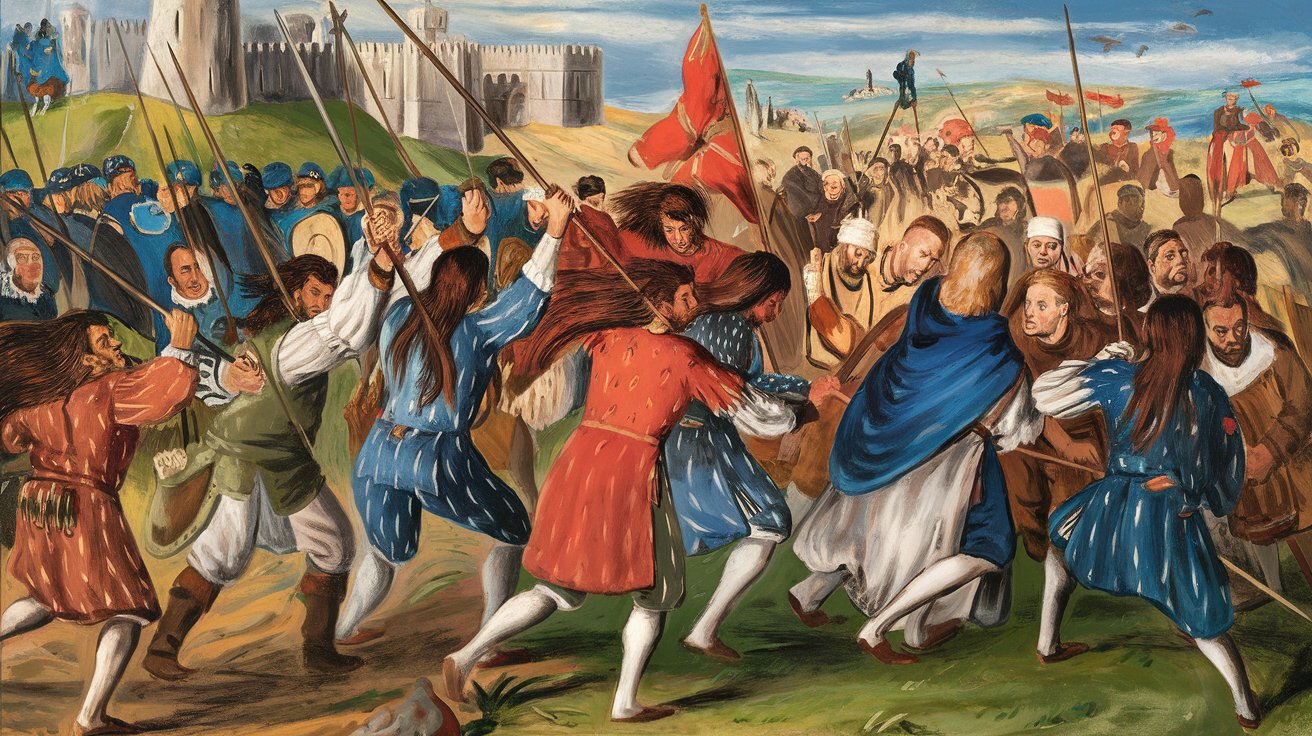
The Albanian Revolt of 1432–36 stands as a significant chapter in the history of Albania. This uprising was a fierce response to the Ottoman Empire's control over Albanian territories. Brave leaders like Gjergj Arianiti and Andrea Thopia led the charge, rallying their people to fight for freedom. The revolt showcased the resilience and determination of the Albanian people, who were unwilling to bow down to foreign rule. Despite facing a powerful adversary, the rebels managed to achieve several victories, proving their strength and strategic prowess. This period is a testament to the enduring spirit of Albania and its quest for independence.
Key Takeaways:
- The Albanian Revolt of 1432–36 was a brave fight for independence against the Ottoman Empire, showcasing the unity and resilience of the Albanian people.
- The revolt's legacy inspired future resistance movements and became a symbol of Albanian national pride, laying the groundwork for Skanderbeg's later campaigns against the Ottomans.
The Albanian Revolt of 1432–36: An Overview
The Albanian Revolt of 1432–36 was a significant uprising against the Ottoman Empire. This revolt was driven by the desire for independence and resistance to Ottoman rule. Here are some fascinating facts about this historic event.
- The revolt began in 1432, led by Albanian nobles who opposed Ottoman control.
- Gjon Kastrioti, father of the famous Skanderbeg, played a crucial role in the early stages.
- The revolt was partly fueled by heavy taxation imposed by the Ottomans.
- Many Albanian peasants joined the nobles in the fight for freedom.
- The Ottomans had recently conquered Albania, making the revolt a swift response to their rule.
Key Figures in the Revolt
Several notable leaders emerged during the Albanian Revolt of 1432–36. These individuals were instrumental in organizing and leading the resistance.
- Andrea Thopia, a prominent noble, was one of the key leaders.
- Gjergj Arianiti, another noble, led several successful battles against the Ottomans.
- The revolt saw the involvement of many local chieftains who united against a common enemy.
- Skanderbeg, although not directly involved, was influenced by the revolt in his later resistance efforts.
- The leadership was characterized by a mix of military strategy and local knowledge.
Major Battles and Events
The revolt featured several significant battles and events that shaped its course. These confrontations were crucial in the struggle for independence.
- The Battle of Mokra in 1434 was a significant victory for the Albanians.
- The Siege of Sfetigrad in 1435 saw the Ottomans struggling to capture the fortress.
- Many battles took place in the rugged terrain of Albania, favoring the local fighters.
- The revolt included guerrilla tactics, making it difficult for the Ottomans to suppress.
- The use of local fortresses and strongholds was a key strategy for the rebels.
The Role of the Ottoman Empire
Understanding the Ottoman response to the Albanian Revolt of 1432–36 provides insight into the challenges faced by both sides.
- The Ottomans deployed significant military resources to quell the revolt.
- Sultan Murad II personally oversaw some of the campaigns against the rebels.
- The Ottoman strategy included both military action and attempts at negotiation.
- Heavy reprisals were inflicted on regions that supported the revolt.
- The Ottomans aimed to reassert control through a combination of force and diplomacy.
The Aftermath and Legacy
The Albanian Revolt of 1432–36 had lasting impacts on the region and its people. The legacy of this uprising continued to influence Albanian resistance.
- Although the revolt was eventually suppressed, it inspired future resistance movements.
- The revolt highlighted the resilience and unity of the Albanian people.
- Many of the leaders who survived continued to resist Ottoman rule in later years.
- The revolt is remembered as a symbol of Albanian national pride and defiance.
- The events of 1432–36 set the stage for Skanderbeg's later campaigns against the Ottomans.
The Legacy of the Albanian Revolt
The Albanian Revolt of 1432–36 stands as a significant chapter in history. This uprising against the Ottoman Empire showcased the resilience and determination of the Albanian people. Led by figures like Gjergj Arianiti, the revolt highlighted the desire for autonomy and resistance against foreign rule. Though ultimately unsuccessful in achieving long-term independence, the revolt laid the groundwork for future struggles and inspired subsequent generations. The bravery and strategic efforts of the rebels are remembered as a testament to their enduring spirit. Understanding this revolt provides valuable insights into the broader context of Balkan history and the persistent quest for freedom. The legacy of the Albanian Revolt continues to be a source of national pride and a reminder of the enduring fight for self-determination.
Frequently Asked Questions
Was this page helpful?
Our commitment to delivering trustworthy and engaging content is at the heart of what we do. Each fact on our site is contributed by real users like you, bringing a wealth of diverse insights and information. To ensure the highest standards of accuracy and reliability, our dedicated editors meticulously review each submission. This process guarantees that the facts we share are not only fascinating but also credible. Trust in our commitment to quality and authenticity as you explore and learn with us.
